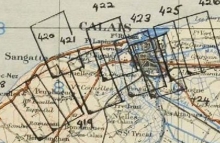Observing Operation SEALION
Newly digitised and released finding aids allow researchers to access RAF aerial photographs of German preparations for the invasion of Britain during the Second World War.
During the Summer of 1940, RAF photographic reconnaissance aircraft gathered evidence that the Germans were secretly moving hundreds of modified barges to the English Channel ports of Belgium and France. These barges were intended to transport troops and armoured vehicles across the Channel in an operation code-named SEALION.
As the Luftwaffe and RAF clashed over the skies of England in the Battle of Britain, photographic interpreters at the Central Interpretation Unit, Wembley, reported daily on the increasing numbers of self-propelled barges and ships in ports including Boulogne, Ostende and Calais. As the month of September drew to an end, and with the Luftwaffe unable to gain air superiority, Hitler postponed the invasion of Britain indefinitely. Over the following weeks the RAF continued to monitor the Channel ports and observed decreasing levels of activity and the gradual dispersal of the invasion fleet.
The aerial photographs and associated sortie plot finding aids from this critical period of history are cared for by NCAP. With the finding aids from these missions now available to view online, subscribers can zoom and pan around these plots to study the coverage obtained each day, in order to identify and order specific frames of imagery of all the invasion ports.


